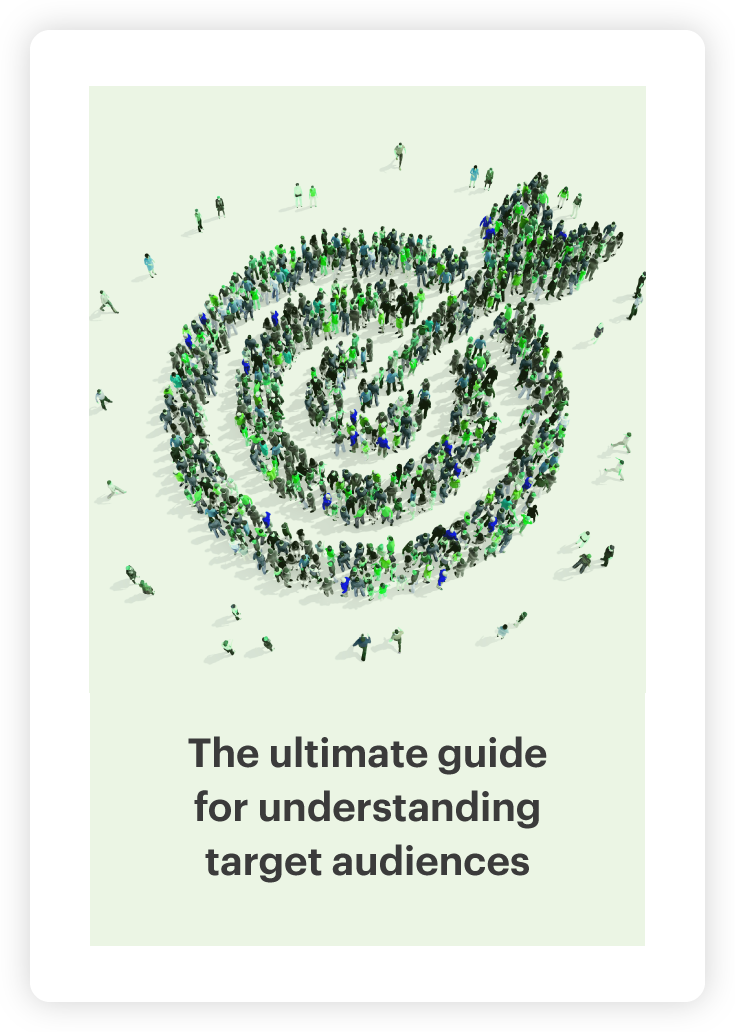Tracking the beauty inclusivity movement over a decade
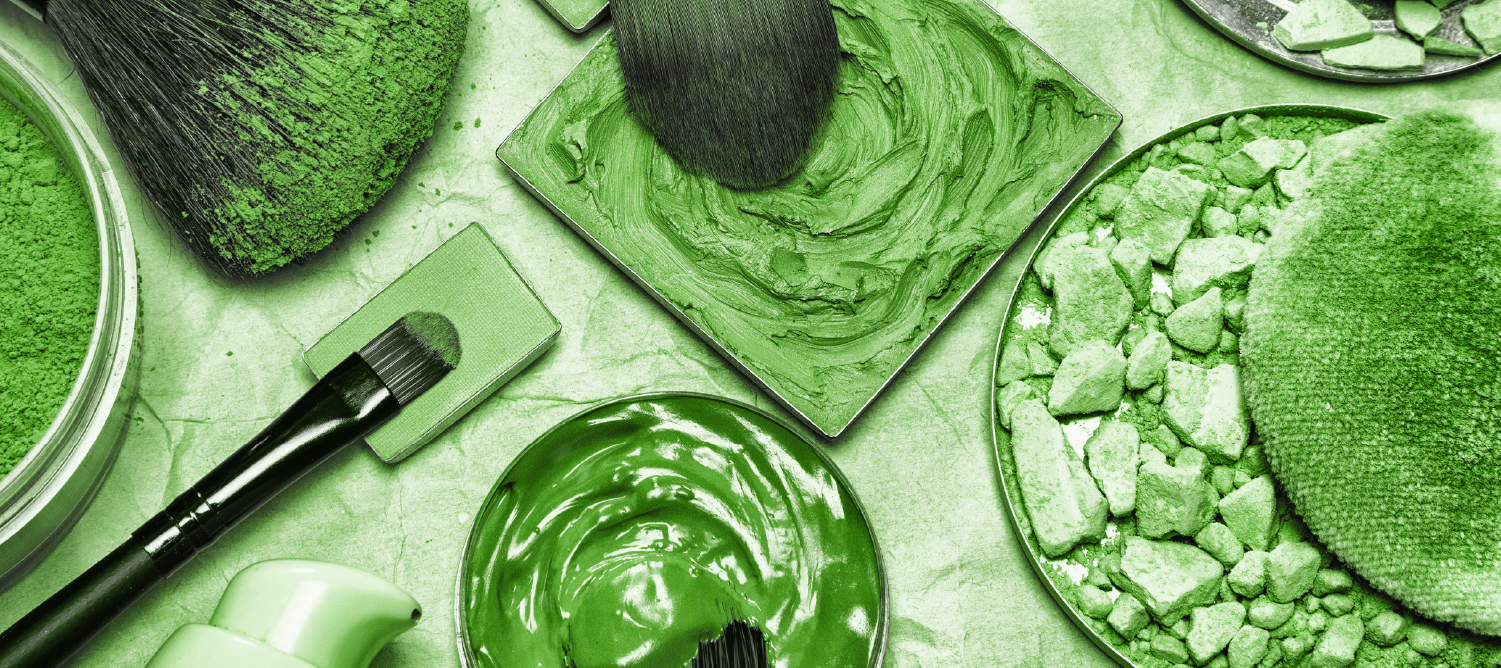
In recent years, the beauty inclusivity movement has gained a foothold in the cosmetics industry. More and more brands are expanding shade ranges for darker skin tones and are featuring models of color, but what does this progress mean to consumers? And how has opinion changed over the past decade?
Relative Insight Heartbeat tracks word usage over time. Simply upload your data into the platform and choose which words to track. Group relevant or synonymous words from your audience insights research together into themes to understand larger trends. This type of data visualization provides a top level view of the evolution of conversation over any time period.
To track the beauty inclusivity conversation over time, we uploaded 10 years of beauty forum conversations – over 15 million words – to Relative Insight. Next, we created a Heartbeat using the forum data and tracked three Themes: Shade range, POC and Inclusivity. Each Theme consists of a selection of relevant words.
- Shade range – Shade, shade range, shades, match, darkest, darker, skin color, skin tone
- POC – Asian, indian, brown, black, african american, POC, BIPOC, people of color, women of color, latina, latinx, hispanic, indigenous, native american
- Inclusivity – Inclusive, Inclusivity, diverse, diversity
HEARTBEAT
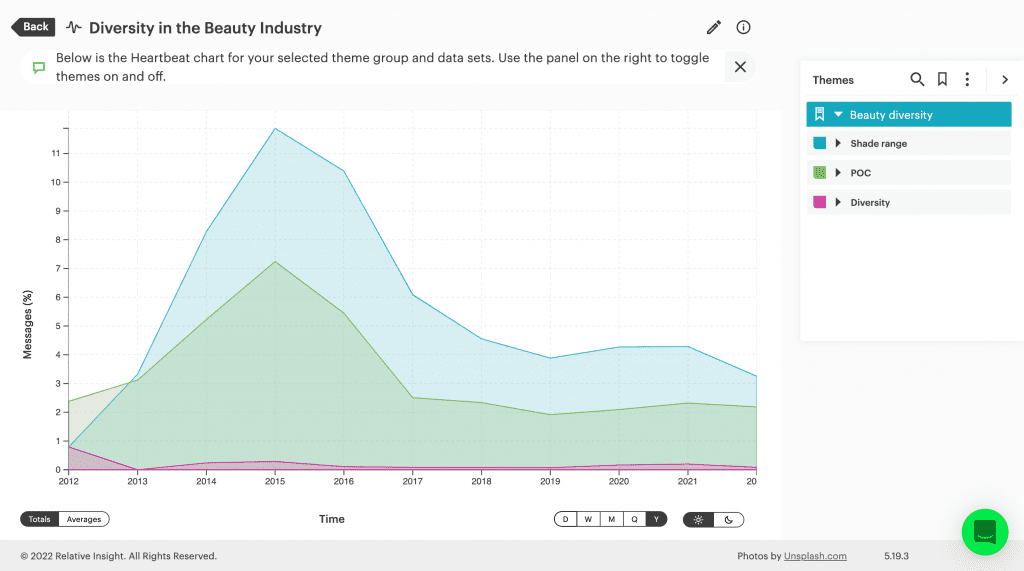
We can clearly see that conversations around inclusive shade ranges peak in 2015.
Many cite the launch of Fenty Beauty in 2017 as the start of the beauty inclusivity movement. Our analysis says otherwise. While Fenty is a pioneer of shade range diversity, consumers were vocal years prior.
We can see the blue and green lines follow a nearly identical course. Mentions of words relating to skin tone and makeup color (blue) are directly correlated to mentions of ethnicity (green). Although they sit at different percentages, both topics take a parallel path, implying that the two Themes are intertwined in conversation.
The conversation among consumers isn’t labeled as inclusivity or diversity. Less than 1% of forum posts actually used those words when discussing the topic – consumers just want makeup that matches their skin tone. This demonstrates the critical need to track the words that consumers are actually using, and not just what you think they’re using.
EXPLORE
It’s clear that 2015 resulted in the highest volume of conversation surrounding beauty inclusivity. We wanted to further analyze why we see a spike in 2015 and how that year differs from the rest of the decade.
To do that, we broke down our 15 million word file by year using the Advanced Splits feature. Then with Explore, we took those isolated conversations from 2015 and compared them to all other years combined.
Differences
Forum conversations in 2015 mentioned ethnicity more than all other years combined. Forum users used phrases like Indian descent, Indian girl, brown girls, darker asian girl and black ladies.
Throughout the entire decade, we see POC of all backgrounds discuss difficulty finding the right shade of makeup, but we saw more South Asian consumers in 2015 than any other year.
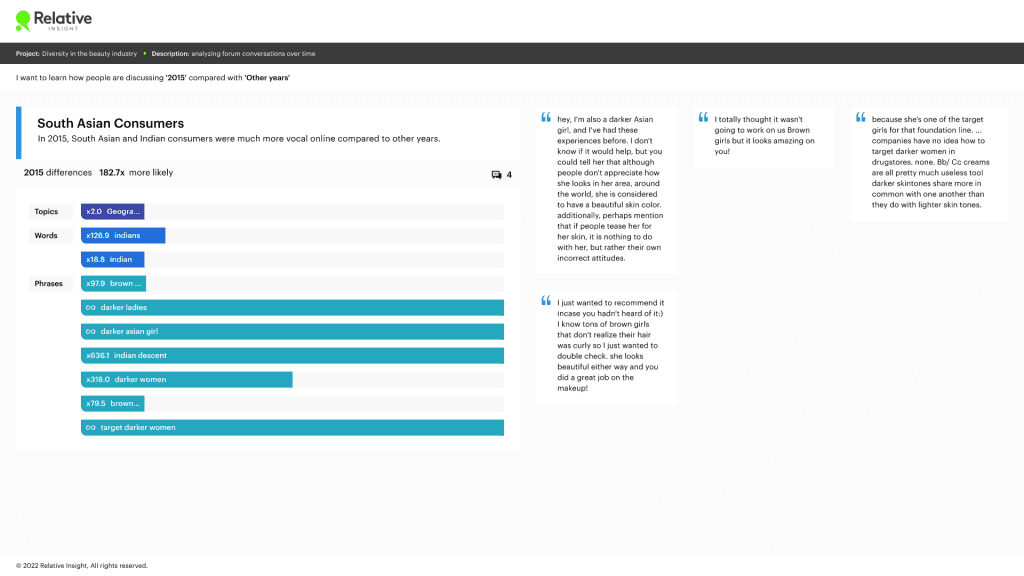
Phrases
We also used Explore to discover the specific phrases consumers used when mentioning the words we tracked using Heartbeat. The contextual understanding provided by surrounding words gives us a better idea of the tone and attitude of conversations.
With Heartbeat, we tracked the word darker. Using Explore, we found that darker was used in phrases like darker ladies, darker skin tones, darker foundations never, darker women need and darker toned beauties. These references show a clear dissatisfaction with beauty inclusivity and market offerings of the time.
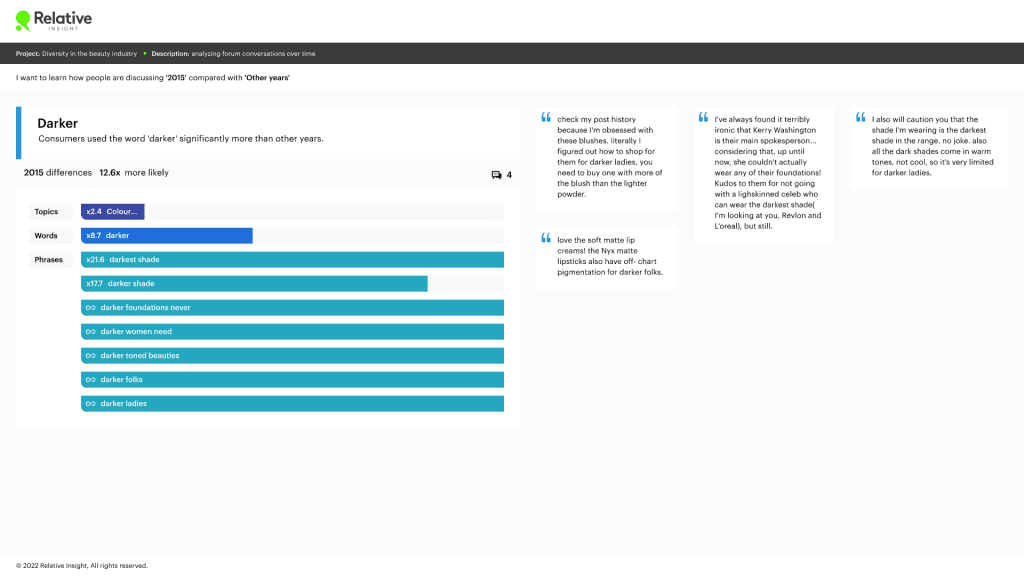
Verbatims
Using Explore, we can also see specific mentions of the words we tracked with Heartbeat. We took a deeper look at the verbatim mentions of the words shade and shades to find consumer dissatisfaction.
“I know I should be happy, but only four new shades? come on Neutrogena, you barely even tried.”
“I personally wish the mainstream brands just included shades for darker women. that way, I can still use the same reviews( because of the same formula) and things like that. instead of calling it nude, they could call that colour beige or something and have a’ nude’ for darker skin tones as well.”
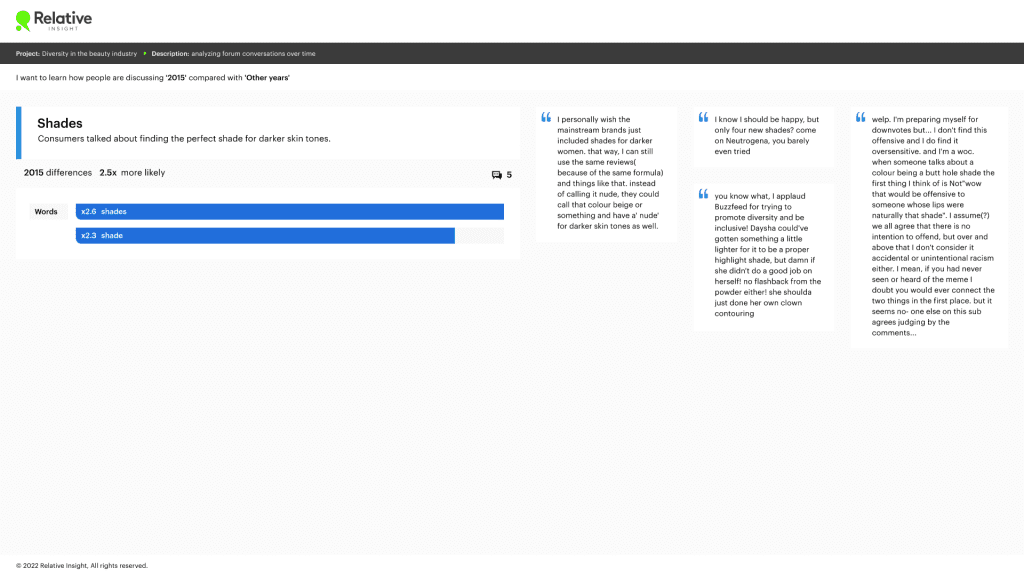
Relative Insight Heartbeat pairs with Explore to understand the evolution of public opinion over time. We’ve seen progress in beauty inclusivity over the last decade and identifying the path of conversation can help us understand the impact of brands like Fenty Beauty. Further analyzing that same data using Explore uncovers why we see those spikes and dips in word usage.
